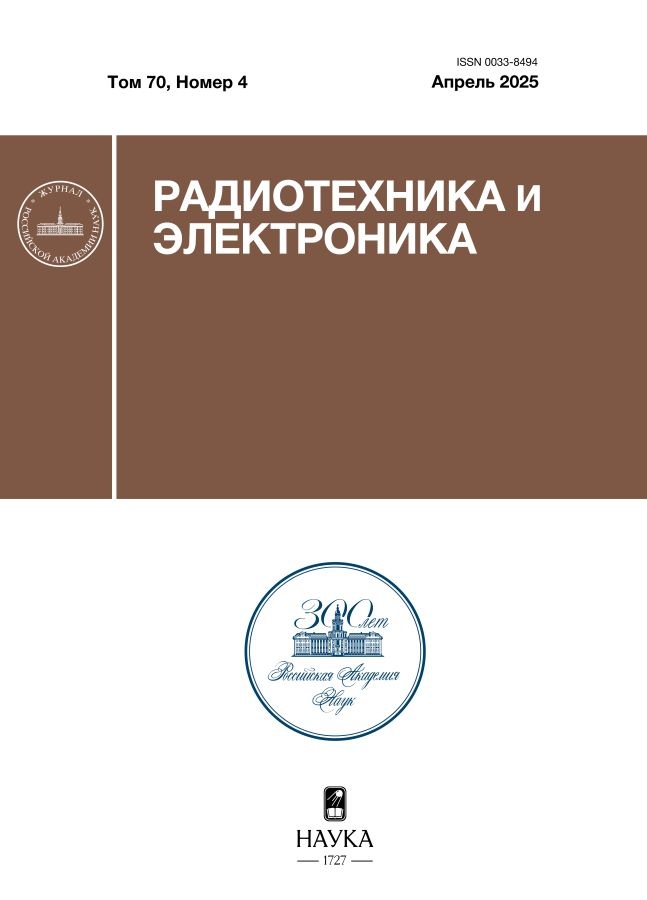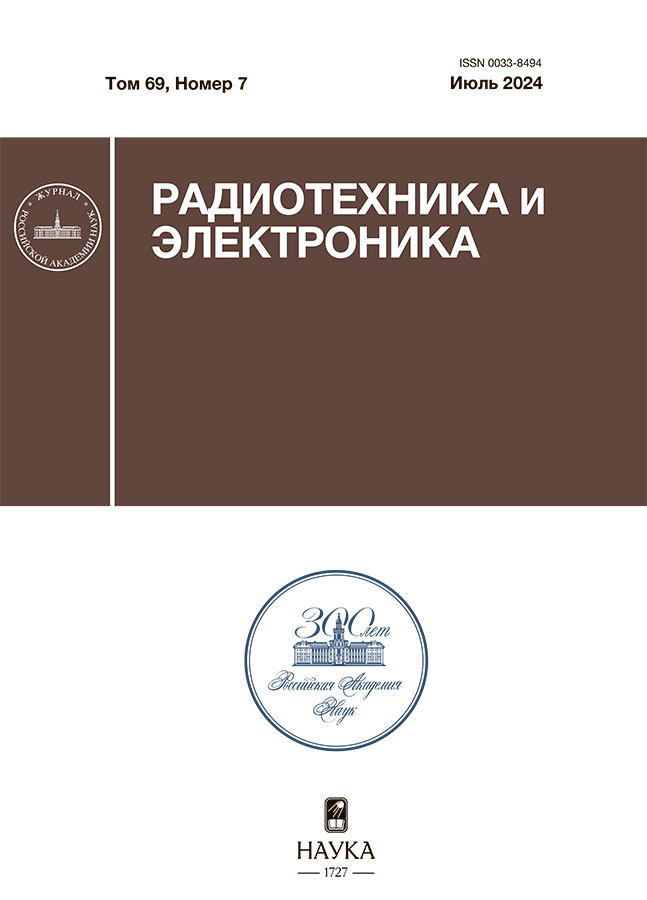Разработка лампы бегущей волны W-диапазона с ленточным электронным пучком и замедляющей системой типа сдвоенная гребенка
- Авторы: Титов В.Н.1,2, Чистяков И.А.1,3, Навроцкий И.А.1,3, Золотых Д.Н.1,3, Торгашов Р.А.1,2, Абрамов О.Р.2, Горшкова Е.В.3, Емельянов В.В.1,3, Рыскин Н.М.1,2
-
Учреждения:
- Институт радиотехники и электроники им. В.А. Котельникова РАН
- Саратовский национальный исследовательский государственный университет им. Н.Г. Чернышевского
- АО «НПП «Алмаз»
- Выпуск: Том 69, № 7 (2024)
- Страницы: 648-655
- Раздел: ЭЛЕКТРОНИКА СВЧ
- URL: https://permmedjournal.ru/0033-8494/article/view/681461
- DOI: https://doi.org/10.31857/S0033849424070067
- EDN: https://elibrary.ru/HYYCQE
- ID: 681461
Цитировать
Полный текст
Аннотация
Приведены результаты разработки лампы бегущей волны O-типа W-диапазона с ленточным электронным пучком. Разработана и оптимизирована конструкция замедляющей системы в виде сдвоенной гребенки с широкополосными согласующими устройствами ввода–вывода, проведен расчет ее электродинамических параметров. Представлены результаты трехмерного компьютерного моделирования процессов усиления в ЛБВ методом частиц в ячейке. Получен коэффициент усиления, превышающий 30 дБ в полосе частот около 25 ГГц. Разработан и изготовлен макет электронной пушки с прессованным импрегнированным катодом, фокусирующим электродом и анодом, обеспечивающий формирование ленточного электронного пучка с высокоаспектным соотношением сторон и током 0.1 А. Представлена конструкция вакуумного окна, обсуждается технология его изготовления.
Полный текст
Об авторах
В. Н. Титов
Институт радиотехники и электроники им. В.А. Котельникова РАН; Саратовский национальный исследовательский государственный университет им. Н.Г. Чернышевского
Email: torgashovra@gmail.com
Саратовский филиал Института радиотехники и электроники им. В.А. Котельникова РАН
Россия, ул. Зеленая, 38, Саратов, 410019; ул. Астраханская, 83, Саратов, 410012И. А. Чистяков
Институт радиотехники и электроники им. В.А. Котельникова РАН; АО «НПП «Алмаз»
Email: torgashovra@gmail.com
Саратовский филиал Института радиотехники и электроники им. В.А. Котельникова РАН
Россия, ул. Зеленая, 38, Саратов, 410019; ул. Панфилова, 1, Саратов, 410033И. А. Навроцкий
Институт радиотехники и электроники им. В.А. Котельникова РАН; АО «НПП «Алмаз»
Email: torgashovra@gmail.com
Саратовский филиал Института радиотехники и электроники им. В.А. Котельникова РАН
Россия, ул. Зеленая, 38, Саратов, 410019; ул. Панфилова, 1, Саратов, 410033Д. Н. Золотых
Институт радиотехники и электроники им. В.А. Котельникова РАН; АО «НПП «Алмаз»
Email: torgashovra@gmail.com
Саратовский филиал Института радиотехники и электроники им. В.А. Котельникова РАН
Россия, ул. Зеленая, 38, Саратов, 410019; ул. Панфилова, 1, Саратов, 410033Р. А. Торгашов
Институт радиотехники и электроники им. В.А. Котельникова РАН; Саратовский национальный исследовательский государственный университет им. Н.Г. Чернышевского
Автор, ответственный за переписку.
Email: torgashovra@gmail.com
Саратовский филиал Института радиотехники и электроники им. В.А. Котельникова РАН
Россия, ул. Зеленая, 38, Саратов, 410019; ул. Астраханская, 83, Саратов, 410012О. Р. Абрамов
Саратовский национальный исследовательский государственный университет им. Н.Г. Чернышевского
Email: torgashovra@gmail.com
Россия, ул. Астраханская, 83, Саратов, 410012
Е. В. Горшкова
АО «НПП «Алмаз»
Email: torgashovra@gmail.com
Россия, ул. Панфилова, 1, Саратов, 410033
В. В. Емельянов
Институт радиотехники и электроники им. В.А. Котельникова РАН; АО «НПП «Алмаз»
Email: torgashovra@gmail.com
Саратовский филиал Института радиотехники и электроники им. В.А. Котельникова РАН
Россия, ул. Зеленая, 38, Саратов, 410019; ул. Панфилова, 1, Саратов, 410033Н. М. Рыскин
Институт радиотехники и электроники им. В.А. Котельникова РАН; Саратовский национальный исследовательский государственный университет им. Н.Г. Чернышевского
Email: torgashovra@gmail.com
Саратовский филиал Института радиотехники и электроники им. В.А. Котельникова РАН
Россия, ул. Зеленая, 38, Саратов, 410019; ул. Астраханская, 83, Саратов, 410012Список литературы
- Григорьев А.Д. Терагерцевая электроника. М.: Физматлит, 2021.
- Zhang X.-C., Xu J. Introduction to THz Wave Photonics. N.Y.: Springer, 2010. https://doi.org/10.1007/978-1-4419-0978-7
- Rieh J.-S. Introduction to Terahertz Electronics. N.Y.: Springer, 2021. https://doi.org/10.1007/978-3-030-51842-4
- THz Communications. Paving the Way Towards Wireless Tbps / Eds T.Kürner, D.M. Mittleman, T. Nagatsuma. Springer Series in Optical Sciences. V. 234. N.Y.: Springer, 2022. https://doi.org/10.1007/978-3-030-73738-2
- Paoloni C., Gamzina D., Letizia R. et al. // J. Electromag. Waves Appl. 2021. V. 35. № 5. P. 567. https://doi.org/10.1080/09205071.2020.1848643
- Shin Y.M., Baig A., Barnett L.R. et al. // IEEE Trans. 2011. V. ED-58. № 9. P. 3213. https://doi.org/10.1109/TED.2011.2159842
- Baig A., Gamzina D., Kimura T. et al. // IEEE Trans. 2017. V. ED-64. № 5. P. 2390. https://doi.org/10.1109/TED.2017.2682159
- Karetnikova T.A., Rozhnev A.G., Ryskin N.M. et al. // IEEE Trans. 2018. V. ED-65. № 6. P. 2129. https://doi.org/10.1109/TED.2017.2787960
- Shin Y.-M., Stockwell B., Begum R., et al. // IEEE Trans. 2023. V. ED-70. № 6. P. 2738. https://doi.org/10.1109/TED.2023.3241834
- Zhang C., Pan P., Cai J. et al. // IEEE Trans. 2023. V. ED-70. № 6. P. 2798. https://doi.org/10.1109/TED.2022.3233291
- Yang R., Xu J., Yue L. et al. // IEEE Trans. 2022. V. ED-69. № 5. P. 2656. https://doi.org/10.1109/TED.2022.3161255
- Рожнев А.Г., Рыскин Н.М., Каретникова Т.А. и др. // Изв. вузов. Радиофизика. 2013. Т. 56. № 8—9. С. 601.
- Каретникова Т.А., Рожнев А.Г., Рыскин Н.М. и др. // РЭ. 2016. Т. 61. № 1. С. 54. https://doi.org/10.1134/S1064226915120116
- Давидович М.В. // ЖТФ. 2019. Т. 89. № 2. С. 280. https://doi.org/10.21883/JTF.2019.02.47084.80-18
- Shin Y.-M., Barnett L.R., Luhmann N.C. // IEEE Trans. 2009. V. ED-56. № 5. P. 706. https://doi.org/10.1109/TED.2009.2015404
- Wang J., Shu G., Liu G. et al. // IEEE Trans. 2016. V. ED-63. № 1. P. 504. https://doi.org/10.1109/TED.2015.2502620
- Srivastava V., Srivastava N. // 3rd Intern. Conf. and Workshops on Recent Advances and Innovations in Engineering (ICRAIE). Jaipur, India. 22–25 Nov. N.Y.: IEEE, 2018. P. 1. https://doi.org/10.1109/ICRAIE.2018.8710392
- Srivastava V. // IETE Tech. Rev. 2018. V. 36. № 5. P. 501. https://doi.org/10.1080/02564602.2018.1509738
- Zheng Y., Gamzina D., Himes L. et al. // IEEE 2020. V. THz-10. № 4. P. 411. https://doi.org/10.1109/TTHZ.2020.2995826
- Nguyen K.T., Pasour J.A., Antonsen T.M. et al. // IEEE Trans. 2009. V. ED56. № 5. P. 744. https://doi.org/10.1109/TED.2009.2015420
- Ruan C., Wang S., Han Y., et al. // IEEE Trans. 2014. V. ED-61. № 6. P. 1643. https://doi.org/10.1109/TED.2014.2299286
- Navrotsky I.A., Burtsev A.A., Emelyanov V.V. et al. // IEEE Trans. 2021. V. ED-68. № 2. P. 798. https://doi.org/10.1109/TED.2020.3041425
- Zheng Y., Gamzina D., Popovic B., Luhmann N.C. // IEEE Trans. 2016. V. ED-63. № 11. P. 4466. https://doi.org/10.1109/TED.2016.2606322
- Yang L., Wang J., Li H., et al. // IEEE Trans. 2017. V. TPS-45. № 5. P. 805. https://doi.org/10.1109/TPS.2017.2688480
- Zhang C., Pan P., Chen X. et al. // Electronics. 2021. V. 10. Р. 3051. https://doi.org/10.3390/electronics10243051
- Yin P.C., Xu J., Yang R.C. et al. // IEEE Electron Device Lett. 2022. V. 43. № 8. P. 1343. https://doi.org/10.1109/LED.2022.3187160
- Cook A.M., Joye C.D., Kimura T. et al. // IEEE Trans. 2013. V. ED-60. № 3. P. 1257. https://doi.org/10.1109/TED.2012.2232929
- Сазонов В.П., Терехина З.Н., Лямзин В.М. // Обзоры по электронной технике. Сер. Электроника СВЧ. 1972. Вып. 3(8). С. 1.
Дополнительные файлы





















